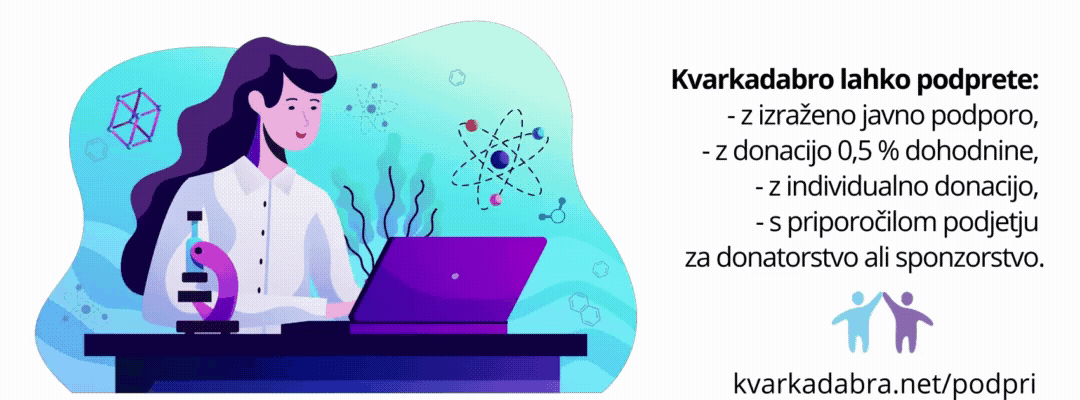Članek Vita Turka, bivšega direktorja IJS in bivšega predsednika znanstvenega sveta ARRS, o stanju znanosti v Sloveniji, ki ga je 22. junija 2017 objavil v RESEARCH EUROPE (Issue 455, p.8, 2017).
Slovenia has squandered a proud scientific legacy
On 19 April, about 500 people joined Slovenia’s march for science in Ljubljana. As well as showing support for colleagues worldwide, they were protesting against the dire state of the country’s research. Their demands included more, and more stable, funding, freedom from political interference and legislative reform, as well as jobs and policies to reverse the country’s brain drain.
Historically, Slovenian science has been among the strongest in eastern Europe. In 1985, with the crisis leading to the breakup of Yugoslavia looming, several distinguished Slovenian researchers convinced the government to double investment in science, spend heavily on equipment, and launch a programme to recruit and train 2,000 young researchers. Slovenia maintained this record through the dissolution of Yugoslavia in 1991.
In the following two decades, however, public spending on science dropped to about 0.5 per cent of GDP. This prompted protests, with more than a thousand Slovenian researchers signing a petition in 1997 to call for increased funding.
It looked like things were going to change in 2009-11, when the then research minister Gregor Golobic increased public R&D spending to almost 0.9 per cent of GDP and launched eight centres of excellence jointly funded by the EU. But in 2011 Golobic resigned, just as ambitious reforms were set to be enacted.
Since then, the country’s scientific legacy has been squandered. After funding from the European Regional Development Fund ran out in 2013, the centres of excellence have been essentially closed, continuing as skeleton operations to avoid having to return the EU money.
In 2015, public spending on R&D was 0.36 per cent of GDP, or €133 million—about the same as ten years ago. Salaries are stagnant and inadequate. Budgets for equipment are essentially zero. In effect, Slovenian scientists have worked for four years on three years’ money.
Slovenia ranks third among EU nations in its number of applications to Horizon 2020 per capita—showing both researchers’ activity and their desperation—but 27th in success rate as a percentage of eligible applications, above only Bulgaria. Its success rate is 10 per cent, compared with about 14 per cent for the EU as a whole.
The picture in business R&D is similar. In 2014, Slovenia had the highest rate of applications to Horizon 2020’s SME Instrument, which funds research by small and medium-sized businesses. Its success rate was about 4.5 per cent, against an EU average of 3 per cent.
In 2015, Eurostat reported that business-funded R&D in Slovenia accounted for nearly 70 per cent of R&D expenditure—placing Slovenia in first place for business R&D spending in Europe. But this owes more to creative accounting than genuine investment, with companies classifying regular purchasing as tax-deductible R&D.
The rot is not only financial. There is instability and delay in decision-making, as each new government changes priorities. Going by the recent Slovenia 2050 government document, with its statements such as “Slovenians in 2050 are a happy people”, policymakers have only platitudes to offer.
There are also administrative problems, such as the Slovenian research agency’s system for evaluating grant proposals. The agency divides research into six areas: natural sciences, technical sciences, medicine, biotechnology, humanities and social sciences. For each call, four experts—two domestic and two international—oversee each area and choose three evaluators for each proposal.
However, evaluators see proposals in isolation, meaning that no one has an overview of the different projects competing for funding, opening the process to random decisions and manipulations. The system is inadequate for covering the full breadth of research disciplines, and there is little quality control of evaluators’ expertise or assessments.
Not surprisingly, Slovenia has seen an exodus of its most talented undergraduates, graduates and postdocs. ERC president Jean-Pierre Bourguignon and vice-president Eva Kondorosi visited Slovenia in June and December 2016. They warned government officials, including the prime minister and education minister, of the country’s low international profile in research, the poor research environment and career prospects, and inadequate funding system. Such visits have had little effect.
In sum, Slovenian science is slipping backwards. It was once a leader among the 13 nations in eastern and southern Europe to join the EU in 2004; now it ranks near the bottom. Denial and blindness must end. The government must, as it did in the 1980s, recognise the benefit of science to societal and economic development.
Vito Turk is a retired biochemist at the Jožef Stefan Institute in Ljubljana. He is a former director of the institute, and a former chairman of the scientific council of the Slovenian research agency.












Upal sem, da bo vsaj gospod Turk evropski znanstveni javnosti pojasnil, zakaj so izključno slovenske znanstvenice in znanstveniki za znanost marširali sredi tedna, vsi ostali po svetu pa so to naredili v soboto. Upanje menda umre zadnje, toda v Sloveniji očitno kakšne tri dni prej …